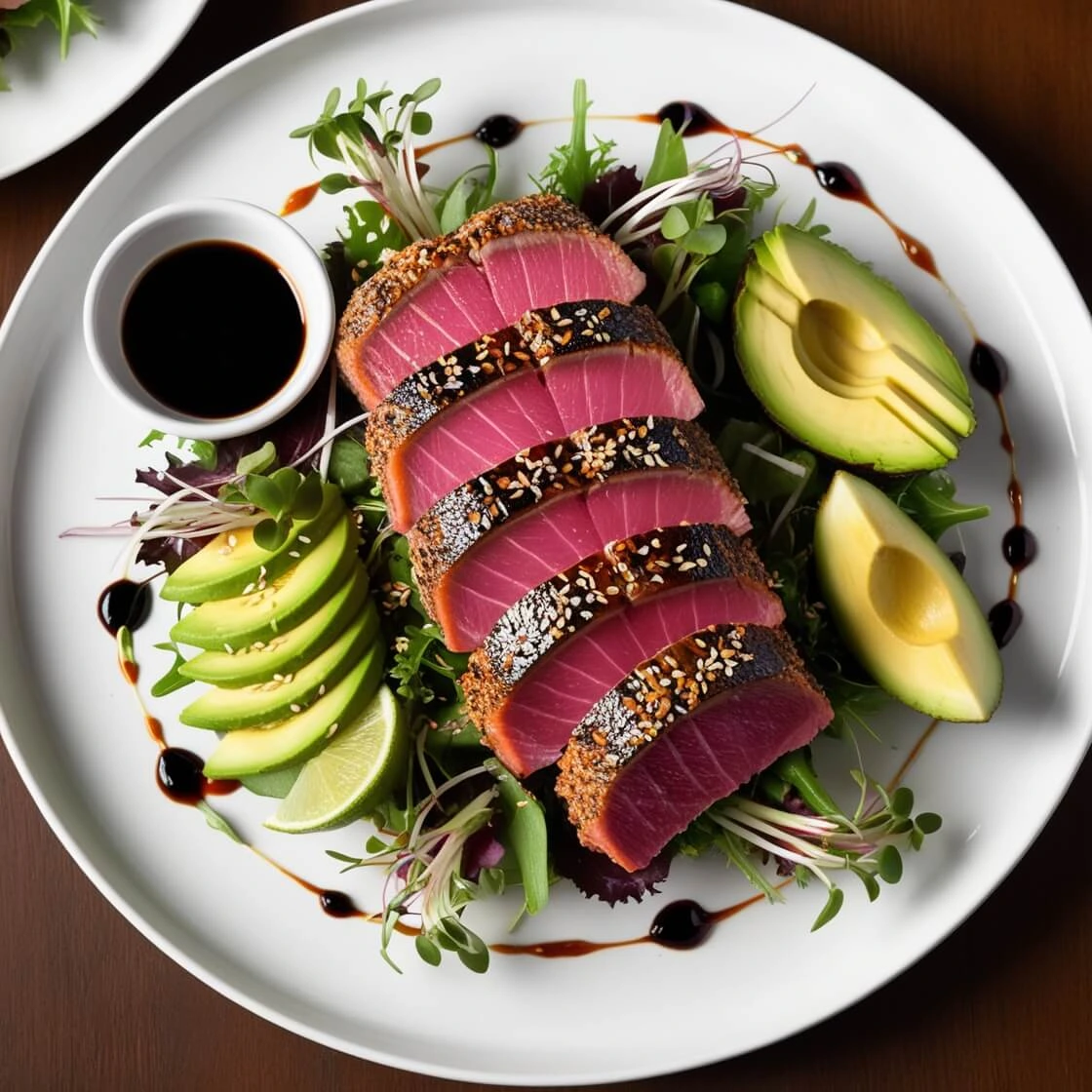Learn how to create the perfect seared ahi tuna recipe with this step-by-step guide. From choosing sushi-grade tuna to mastering the searing process, we’ll share tips to help you achieve a flavorful, restaurant-quality dish that’s quick, healthy, and impressive!
1. Choosing the Right Ahi Tuna
Why Sushi-Grade Tuna Matters
Sushi-grade tuna ensures safety and flavor. This premium quality tuna is frozen at ultra-low temperatures to eliminate parasites, making it safe for raw or lightly cooked dishes like seared ahi tuna.
Fresh vs. Frozen Tuna: What’s Best?
Fresh tuna is ideal for searing, but high-quality frozen ahi tuna is a great alternative if thawed correctly. Ensure no freezer burn, and defrost gradually in the refrigerator for the best texture and taste.
Signs of High-Quality Ahi Tuna
Look for bright red, firm tuna with minimal odor. The flesh should appear moist but not slimy. Avoid discolored spots or a fishy smell, which indicate lower quality or spoilage.
2. Preparing Your Tuna Steak for Searing
Learn more about selecting the best tuna for your recipes in this guide on Choosing the Right Tuna.
Drying and Seasoning Your Tuna
Pat the tuna steaks dry with paper towels to remove excess moisture, ensuring a perfect sear. Season generously with salt and pepper for a simple yet flavorful base.
Marinating for Extra Flavor
Enhance your tuna’s taste with a marinade of soy sauce, lime juice, garlic, and ginger. Marinate for 15-30 minutes to infuse flavor without overpowering the natural taste of ahi tuna.
Adding a Flavorful Crust
For extra texture, coat your tuna steaks in sesame seeds or spice blends. A sesame crust adds nutty richness, while a spice crust can deliver a smoky or spicy kick.
3. Mastering the Searing Process
Preheating Your Pan
Heat a cast iron or heavy-bottomed skillet over medium-high heat for a few minutes before adding oil. A properly heated pan ensures even searing and prevents sticking.
Choosing the Right Oil
Use high smoke-point oils like avocado, sesame, or vegetable oil. These oils can handle the high heat required for searing without breaking down and affecting the flavor.
Searing to Perfection
Cook the tuna steaks for 1–2 minutes on each side, depending on thickness. Aim for a golden-brown crust while keeping the interior rare or medium-rare for the best texture and flavor.
4. Perfect Pairings and Serving Ideas
Simple Side Dishes
Complement seared ahi tuna with light sides like steamed rice, quinoa, or mixed greens. These options balance the richness of the tuna without overshadowing its delicate flavors.
Delicious Dipping Sauces
Enhance your dish with soy-ginger glaze, wasabi mayo, or sriracha-lime dipping sauce. These sauces add umami, tanginess, or heat to pair perfectly with seared tuna.
Plating and Garnishing
Create a visually appealing plate with sesame seeds, scallions, or lime wedges. A drizzle of sauce and a colorful side dish can make your presentation restaurant-worthy.
5. Troubleshooting Common Mistakes
Avoiding Overcooking
Sear tuna quickly and monitor the time to keep it rare inside. Overcooking leads to a dry, chewy texture. Aim for a pink center for a perfectly tender bite.
Preventing Sticking
Use a well-heated pan and enough oil to prevent tuna from sticking. Avoid moving the steaks immediately after placing them in the pan, allowing the crust to form naturally.
Fixing Uneven Searing
Ensure uniform thickness by trimming the tuna steaks if needed. Uneven pieces can cook inconsistently, leading to overcooked or undercooked sections.

